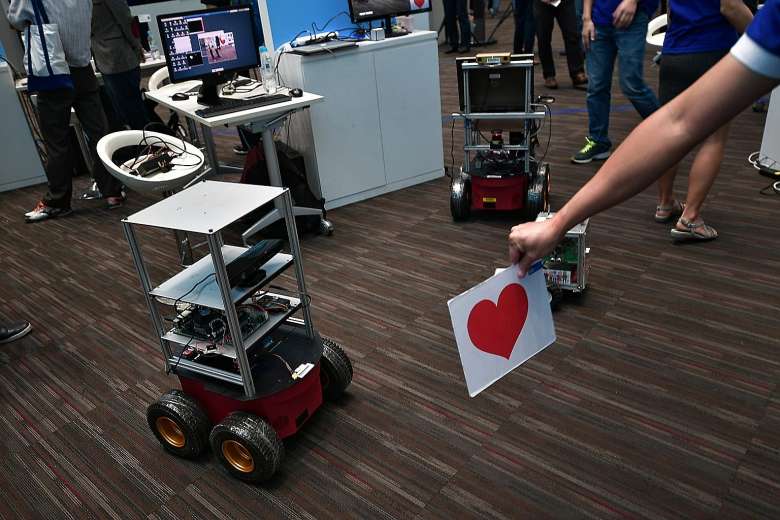Some of the brightest minds at Nanyang Technological University (NTU) were busy showcasing and explaining their inventions in an auditorium.
They were hoping to show visitors how the university is pushing the technological boundaries and help to build a smart nation.
These innovators were not students but professors from the university’s School of Electrical and Electronic Engineering (EEE).
Universities typically hold events to showcase student projects, but faculty chair Yoon Soon Fatt said the school decided to hold the inaugural EEE Expo yesterday to “show its diversity of research”. “We believe this expo is very timely for the public and our young students to learn what we’re offering in terms of research and development as a school,” he said.
Besides the expo, there was also a job fair for graduating students to network with potential employers.
A total of 150 junior college students were invited to participate in a makers’ workshop, where they learnt how to build electronic gadgets from engineering professors.
There were 30 projects on display at the expo, which included “invisible headphones”, a multi-layer 3D display and wireless power-transfer technology.
A project that was highlighted was a sensor system which can identify defects on rail tracks and trains in real-time to provide faster repairs.
Associate Professor See Kye Yak, director of the SMRT-NTU Smart Urban Rail Corporate Laboratory, said the lab has carried out two field trials using the patented sensor system since last July, and hopes to launch a fully-functioning version by mid-2019.
“Tracks nowadays can be inspected only when a train is off-service… So you have a very short period of time to do the track inspection,” he added. “We try to have as many sensors as possible on a train, so the train doubles as an inspection vehicle during the day.”
Another project on display yesterday examined the circulatory system through a vest with in-built electrocardiogram (ECG) and sound sensors.
Associate Professor Lin Zhiping explained that the wearable device will make it easier to record crucial health information such as heart blockages. The vest has undergone a successful field trial on 19 patients in Tan Tock Seng Hospital, the project’s clinical partner .
Prof Lin said: “It’s important for a patient to have daily monitoring (with equipment) that is easy to use and easy to wear without the hassle of a lot of wires and a heavy vest. This ECG can be used during activities like exercising to monitor heart activity.”


